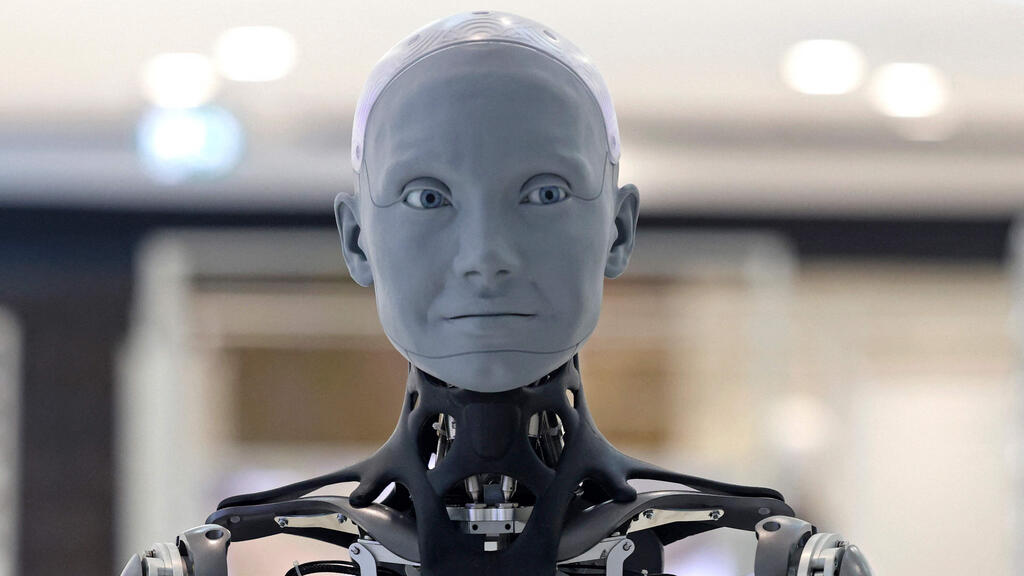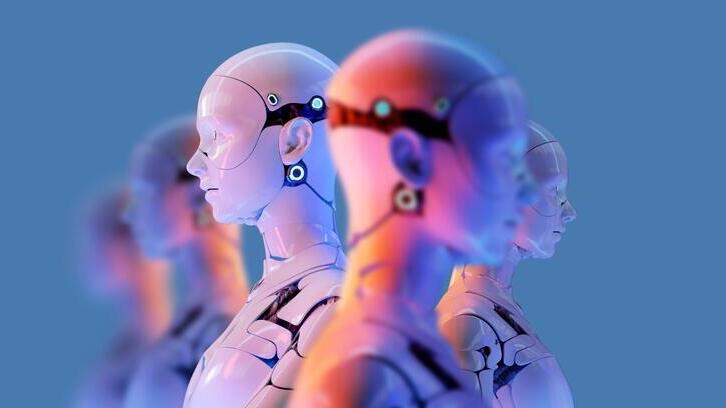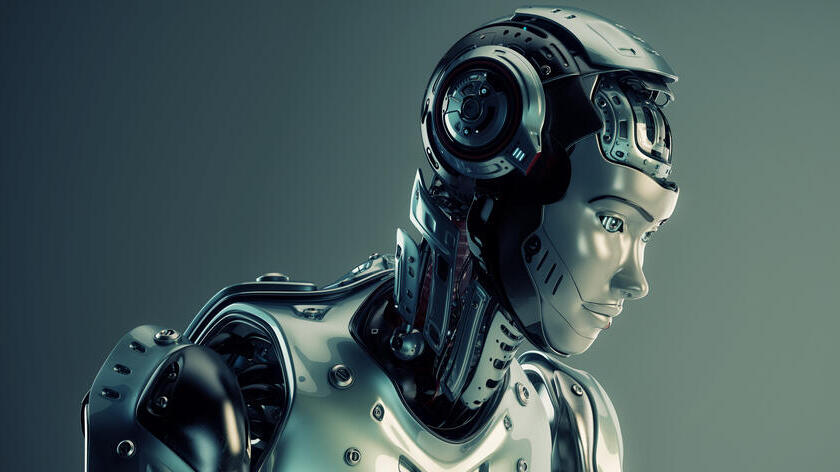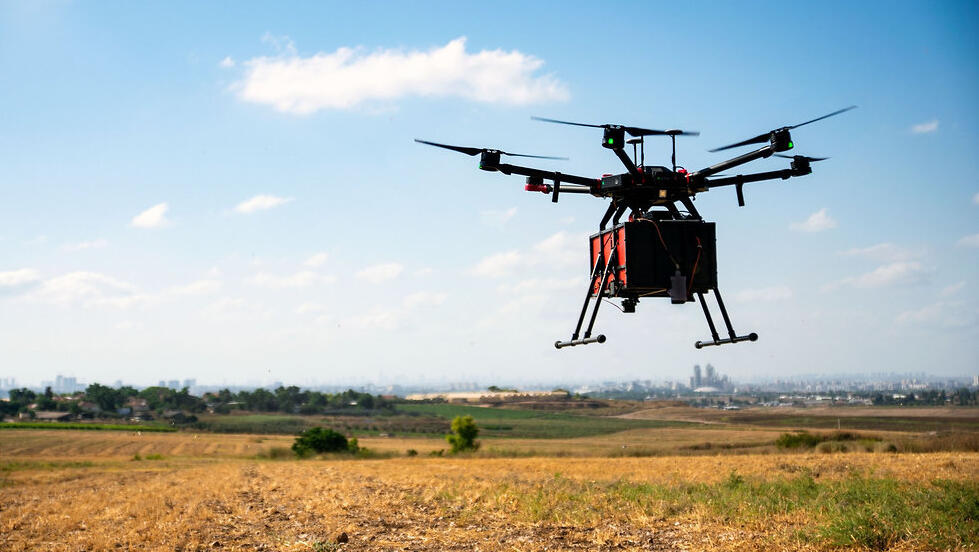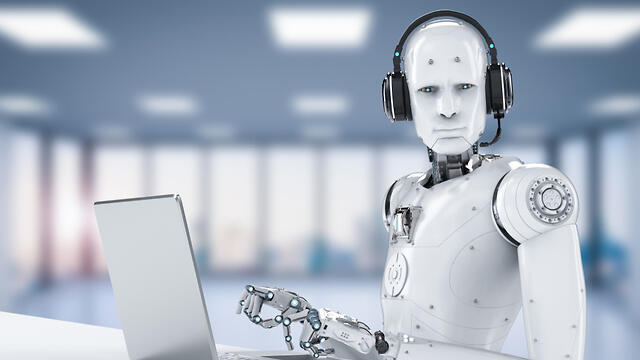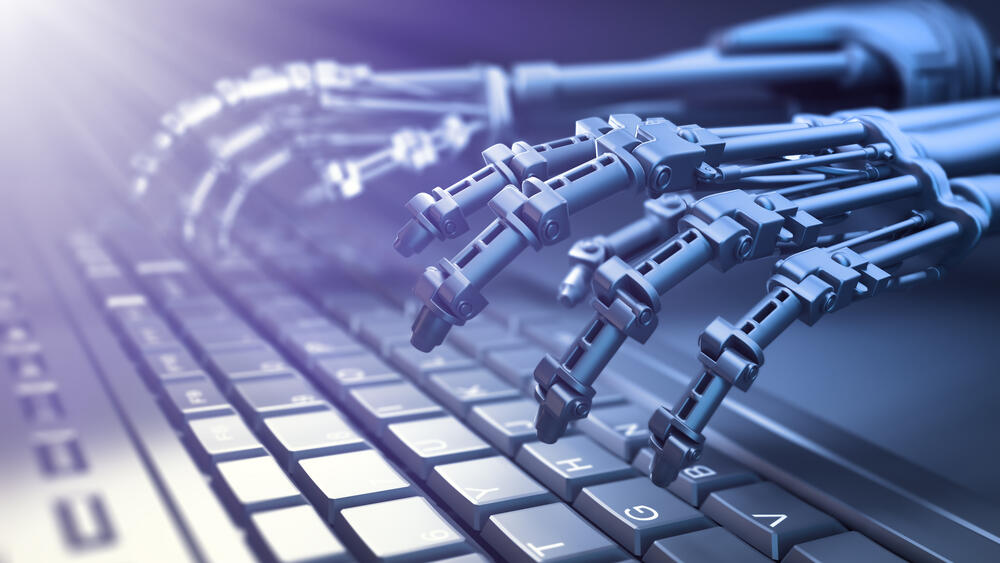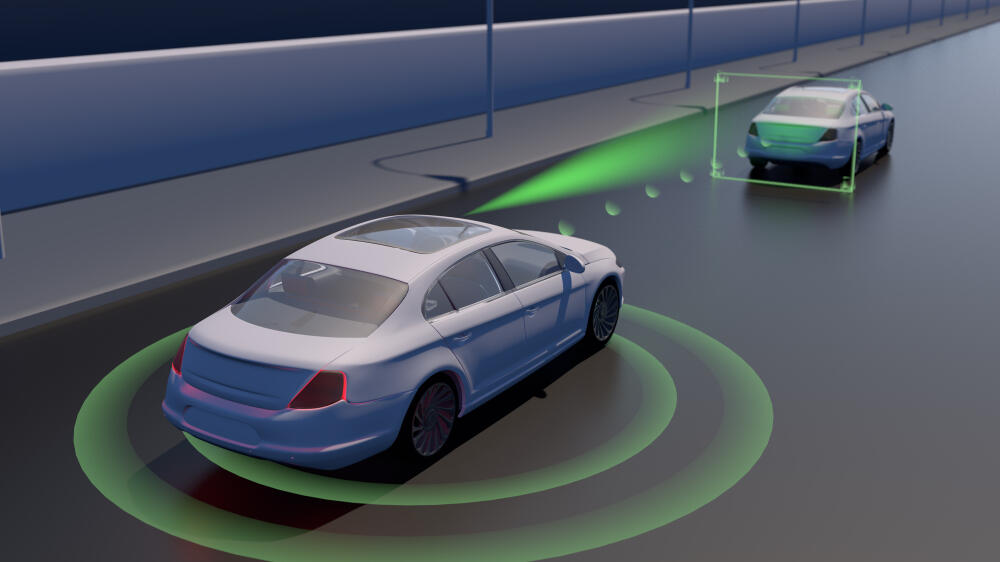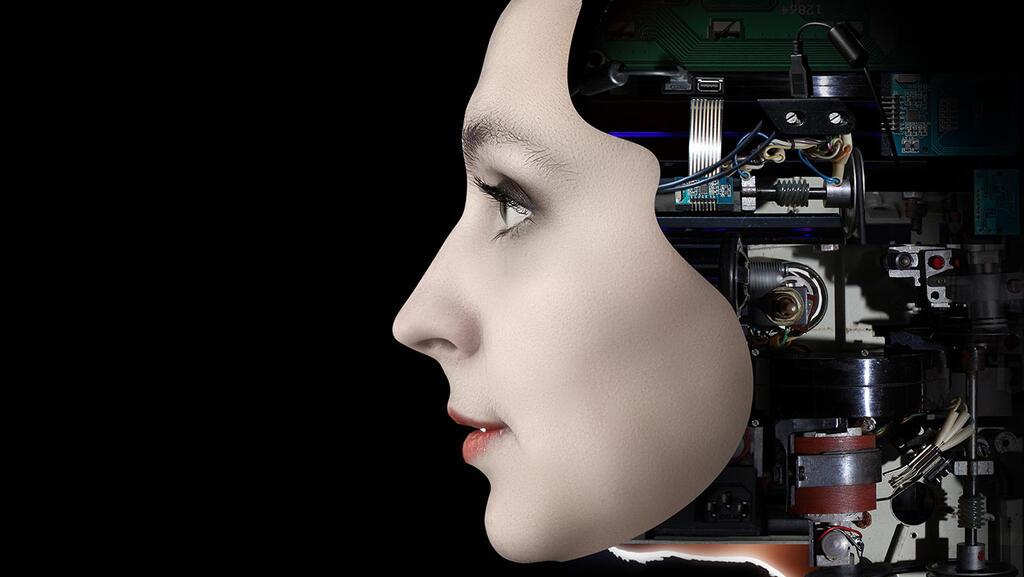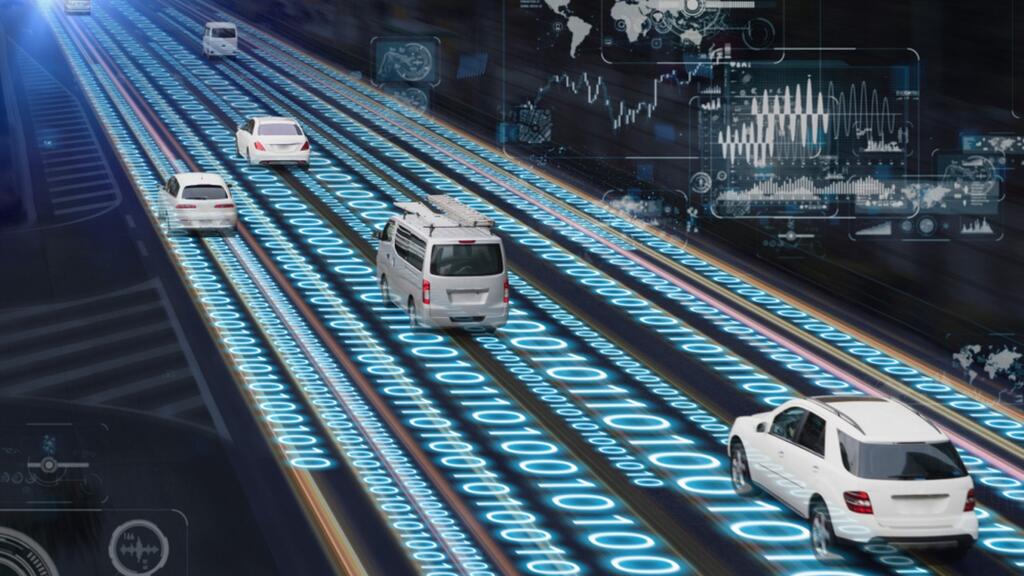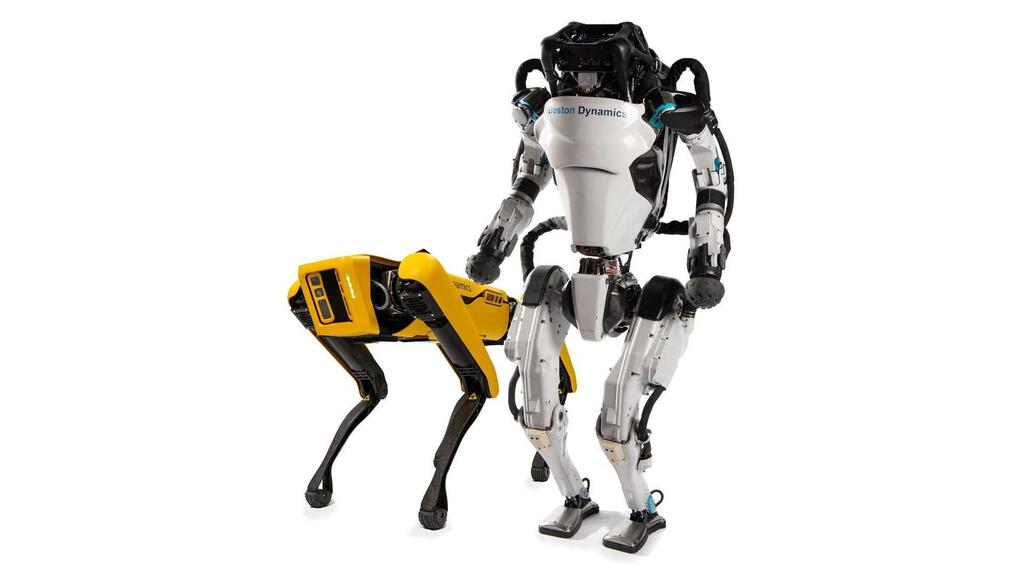Robots could be new hardware of start-up nation, Israeli experts say
From the Maschinenmensch to Motoko Kusanagi, Robocop to R2D2, robots and robotics have captivated human imagination for almost a century. And, in the past six decades, humans have made those dreams a reality, transforming our working lives and leisure time.
Now, Israeli robotics guru Prof. Zvi Shiller, director of the Laboratory for Robotics and Autonomous Vehicles at Ariel University and the founding chair of the Israeli Robotics Association (IROB), is calling for the country to invest resources in the field as other first-world nations have done.
In an interview, Prof. Shiller spoke about the importance of robotics, the implications for Israel and how it could transform the country’s economy and industry.
Humanity lived without robots for centuries, why have they become such a dominant part of modern life?
Robotics is an evolution of technology. We started with the industrial revolution that solved the problem of people working hard days and nights without human conditions, and this revolution actually advanced into developing robots in the early 80s.
The first robot that was developed or built to work in the factories was built in 1961 by a company named Unimation. Then they continued developing those, but they were not ready yet to get into the factories.
In the early 80s, the computers advanced and the knowledge about what is a robot and how it works and how to control it advanced, and they started using them in car manufacturing, mostly at the beginning in the United States.
Later, they actually went into industries in Europe, Germany and in Japan, and this is the beginning of robotics the way we know today.
Eventually over time they developed more and more, not only robots that work in the factory, but also robots that move around on roads, for example autonomous vehicles, or robots that move around the house and clean the floor, like the Roomba that came out in 2002.
Robotics is kind of an evolution of technology that is being developed to assist us or to make our life easier, that’s the idea. If they were not making our life easier, then probably nobody would have been developing those.
In addition, they help us solve problems where you don’t want to send humans. For example, if there is a nuclear reactor that blew up like in Chernobyl, if they had robots, robots would move in, and they would turn off the valves and then nobody else would be hurt.
So eventually this technology is being developed to assist us in performing tasks that humans do not want or prefer not to perform.
Today we see robots in many fields; what does the future with robots look like?
The future for robots is bright. It looks very promising because the technology is advancing dramatically in recent years and then when you learn how robots can help you, you become addicted to it and you want it more and more.
For example, those people who bought Roomba 20 years ago, most of them probably don’t let them go; they want more and more of the same. It’s the same thing with your smartphone – once you start using smartphones, you don’t want to go back to landline telephones.
The same thing is going to happen with robotics and as they develop you find more and more applications where they are actually very useful, efficient and cost effective. For example, in agriculture, a very labor-intensive field, you send robots and they can work day and night without being tired and also spray pesticides without affecting a human driver.
The future is really optimistic, because robots are already in many, many [areas] of our daily lives. They will just get more and more into that, and they will become cheaper and cheaper, and you will see robots basically everywhere.
One thing that I can say is that most of the future applications of robotics haven’t been invented yet. What you see now, in my opinion, is a fraction of what these robots can do and what they will do in the future.
What role would they have in the defensive sphere?
Defense is something we are thinking of already. Again, you use robots when you don’t want to send people. I gave an example of a nuclear reactor where you prefer that robots do some of the functions instead of humans and they take the risk.
It is the same thinking regarding military robotics, where you want the robot to take the heat and not the person. Armies are already doing it with dogs; we’ve become more and more careful about dogs, which I agree with. Dogs are souls that need to be protected too. We cannot just throw them away as commodities.
Robots will take some of these tasks where there’s a risk involved in. We read in the news that in Iran for example, automatic or robotic drones were flown into a ship and blew it up. They were not successful in sinking the ship, but they did some damage.
This is something that has been growing quite a bit in recent years because the technology is ready. This is not something that I personally am involved in, because I strongly believe that the use of robots for civil life, for peaceful life, is going to be much bigger than the use of robots for military purposes.
Why does Israel need to build its own robots? Has it missed the boat? How long would it take to get the sector in Israel up and running?
First of all, Israel is building robots, in some sectors actually Israel is leading the world. For example, one company called Maytronics is selling swimming pool cleaning robots, and they hold about 50{38557cf0372cd7f85c91e7e33cff125558f1277b36a8edbab0100de866181896} of the world market.
Why do they want to do that? That’s what they know how to do; they do it well. And of course, the world is buying what they sell, so it is very successful. There’s no controversy about using robots to clean your pools, and people are getting more and more spoiled and busy with other things. You save a few hours a week if a robot cleans the swimming pool and not you.
Another example is medical robotics. Israel is very advanced in medical robotics. This is a field that has been very much developed in the Technion [Israel Institute of Technology] and also in the Hebrew University [of Jerusalem].
In our own university, we also have a few people who are developing robots for medical purposes. They are not used yet by the market because it takes time.
There’s one milestone that these robots must pass, which is to be approved by the FDA, the American Food and Drug Administration. I’m hearing that about 30{38557cf0372cd7f85c91e7e33cff125558f1277b36a8edbab0100de866181896} of all the medical robots worldwide that are FDA approved originated in Israel, either from an Israeli company or from a person who got their schooling in Israel. So Israel is doing it.
But what we are doing, we are doing more slowly than I would have loved to see. The reason is that Israel has not invested in robotics as much as several other countries. For example, in [South] Korea, for 20 years they’ve been investing, and in the very beginning they embarked on a robotics revolution and started investing $100 million every year in robotics. That’s unheard of in Israel.
Europe is investing a lot in robotics with the Horizon 2020 [the European Union funding program for research and innovation] and the previous program. China is investing a lot in recent years; Korea is investing; Europe is investing; Japan is investing. The United States less so. Most of the funding over there is coming less from the government and more from the private sector.
In Israel, this industry is not the biggest thing that we are relying on… we are relying on the high-tech industry and that is using robots less than others.
One sector that is being pushed presently in Israel is agriculture, and in agriculture we are very good. We have the Volcani Center [Israel’s national agricultural R&D center] that is doing a lot of research to develop new devices, new machines that will make production of food more efficient and cheaper and recently they are going into robotics.
We have a few Israeli companies that are developing robotic tractors that are running in the fields, and whatever people used to do before, they are doing automatically.
We cannot do everything. We are a small country, but we are a little bit late to get into this revolution in terms of the investment by the government.
What must happen for the government to invest more in this industry?
I will rephrase your question: Should we be in this industry? Because there is a common understanding that we don’t have to do everything and there are some devices or some machines that we can buy from somewhere else.
Now this used to be true until just a few years ago, before the coronavirus and the Russia-Ukraine war, where basically we were living in a global world, meaning you could get whatever you wanted anytime, and you didn’t have to produce everything.
Once coronavirus came in, all the supply lines were cut off and if you didn’t have self-manufacturing or self-supply of some goods you simply didn’t have them. This was very apparent in devices that were used to save lives, like ventilators.
So you realize that if you don’t have something and the entire world is in chaos, you are going to lose out. My personal observation is that when the world stops being global, meaning that you can easily get goods from one side of the globe to the other, then you’d better become local, meaning you’d better produce what you need yourself.
The very best example is food supply. When Ukraine was fighting Russia, they stopped delivering wheat. Much of the world, Israel included, was relying on the wheat coming from Ukraine. First of all, prices go up and you have to start producing it yourself because nobody else will do it for you.
My understanding of what’s been happening recently is that the world is less and less global and more and more you must do things locally.
The pain is global, the gain is local, meaning if you are already prepared to produce devices or machines for yourself, you will have them when you need them, and you will not be relying on other countries and other supply chains that suddenly break down for whatever reason.
I believe the tendency should be to be local and start producing yourself whatever you need to be self-sufficient – it can be food security; it can be health security. If you need any devices to take care of your people, you’d better be able to produce them yourself unless you are sure that you can buy from somewhere else.
I believe that that’s the trend that is going to dominate the robotics field.
What role does artificial intelligence play in the robotics sector?
It’s a very good question. I’ve been in the robotics field for 40 years; I started my studies at MIT in 1982. In the beginning they always talked about artificial intelligence. The difference between what they are doing now and what they did then is that the nature of our artificial intelligence has changed. What it means to me is that artificial intelligence is that part of the robot, which is like the brain, that makes the decisions for the robot and tells it what to do.
So previously telling the robot what to do meant telling it what route to take to get from one place in the house to another, or from one place in the country to another, like [GPS traffic app] Waze.
Early artificial intelligence was really dealing with path planning. What do you do when you have obstacles in the middle? How do you bypass them efficiently? Now that matured more and more in recent years, and today artificial intelligence, when it comes to robotics, is getting more and more into what’s called machine learning.
There are different versions of machine learning, but that’s roughly what describes what machine learning can do for robotics. Machine learning you do for two main reasons: one, you can study what’s around you. Suppose you are looking at a dog. If you’ve never seen a dog, you don’t know it’s a dog, but if you are trained to see dogs and you can see a new dog and say, “Oh, that’s very similar to what I learned or what I saw just yesterday, so that must be a dog.”
And if it’s a dog, you must bypass it and do whatever you need to do. If you are looking at an obstacle, at another car and you learn what these cars look like, eventually you will know that this is a car and that will dictate what you do about it. You won’t run into it; you may stop in front of it or may bypass it. So one part of artificial intelligence is to help you understand the environment.
Now that you know what’s around you, again, you use artificial intelligence to help you understand, the second part is “OK, how do you avoid it?” If you are moving slowly, that’s very simple. You move to the right, you move to the left, and you basically try not to hit the obstacle.
But if you are driving at high speed on a very crowded road, it’s not so easy to make a decision. Because if you do the wrong thing, you either run into another car or you can miss the turning to get off the road.
One way to deal with these problems is to do it based on models – the model of the car, the model of the road – and understanding the dynamics of the car and of course the motion of the objects around you.
This is called model-based control. You take the model, you calculate what you need to do in order not to lose traction on the road, not to lose stability, and you can come up with a solution. The problem with that approach is that you don’t always know the exact model of the car.
For example, you can get on a road that is a little bit slicker than what you learned earlier, and you may make mistakes because your model doesn’t capture the reality that the vehicle is seeing at the moment.
The opposite way, which is artificial intelligence, is to let the car learn from its own experience what is the best action to take in specific situations. That’s called machine learning, because it is the computer that learns and not the person that sits behind it and not the model that the person or the mathematician created.
Today, more and more artificial intelligence is getting into robotics, not only as something that helps robots understand the environment around them, but also to help them control their own actions.
This is relatively new, something that has been developed in the last 10 years. That’s going to be integrated into robots more and more, and basically make robots somewhat independent so they can learn on their own like human beings do, like children do.
You raised the idea of a national institute for robotics. How could an institute help the Israeli economy grow, in particular in the high-tech sector?
This convergence or integration of robotics with artificial intelligence brings robots to new highs in terms of performance, but what’s also happening now is that the demand for robots has shot through the roof, and this is mainly because of coronavirus and of course because of need. You need more food, and you don’t have the manpower to actually do [that] properly.
Many professions are lacking manpower. You need manpower in industry, there is not that much anymore; you need manpower in the hospitals; you need manpower in assistance. For example, in Israel we rely on foreigners to help the elderly. I don’t think that we can rely on that forever.
The needs are growing, and this convergence of technology, robotics, artificial intelligence and need actually creates a large demand for robotic solutions, because you sometimes don’t have another choice.
You want to produce more food, you don’t have more people to do that, so robots will do it. Again, it’s the same thing in agriculture, the same thing in medicine, same thing in assisting the elderly. Everywhere you look, you understand that you will not be able to survive without robotic solutions. Suddenly the need for robotics grew tremendously in the last few years, compared to previous years.
You must be self-sufficient, you must be able to develop the robots yourself, and not just rely on others to do it for you, for two reasons. First, you know how to do it and if you get the help, the assistance, you can do it well. Second, if we do it, we may create a new industry that was relatively small until now.
One way that I look at it is that you can take the existing high tech-industry in Israel and basically convert it or transform it to become a robotics industry. So the infrastructure is already there, you just have to add to the software and the electrical components that we know how to develop, you add to it the mechanics, and you can actually have a world-leading robotics industry.
Now why do we need the Robotics Institute? Private investors shy away from robotics because of market failures [such as] a long time to market. You deal with hardware and software and this combination is really difficult to handle. Of course, it’s very expensive, it’s multidisciplinary, so you need several professions on your side when you develop the first robot in your company.
Unlike in software, where you can have a few programmers to develop whatever you need, and they can run with it quite fast. In robotics, it’s a much slower process, so it’s not unheard of that it takes 10 to 15 years, sometimes 20 years, to develop a robot; it’s not yet profitable.
So private investors are shying away from robotics unless they see a great opportunity.
As I said, many of the robots that need to be developed haven’t been invented yet. One example is just to look around the house, there are many tasks that you do daily. If you are young, it’s not a problem for you to do them, but as people get older and older, they cannot manage some of these tasks by themselves and usually they have somebody to assist them.
But in the future, you may not want to rely on this “somebody’” to assist you, you may want to have a machine that can assist you. For example, if you want to sit down or stand up and your knees are very weak. Usually somebody comes and helps them stand up and then they walk on until they need to sit down or stand up again. A robot device can help a person with this kind of task.
Autonomous vehicles are a known example, but I will bring it up anyway. Suppose that an elderly couple wants to go to the theater, cinema or concert today, and they cannot drive. Today they would call the grandson to take them to the theater or they would take a taxi. But then in the taxi there is a driver.
I’m now talking about the coronavirus period: there’s a driver who can infect them because they don’t know who he is and where he was before he came to pick them up.
There is also the car itself; it’s not easy to get in and out. My students a few years ago developed a car that was supposed to be autonomous for an elderly couple.
They could sit in it, tell the car where to go and it would take them without anybody else involved. That’s basically what’s happening today with robotic taxis. We called it the third generation helping the third age – that was the slogan for the tech.
You’re asking me why we need this robotic institute. We need it to encourage the creation of new robotic companies in Israel. As I said earlier, the private market is not eager to do that because of the cost involved.
If we had a robotic institute, it would do three things. [First] is that it will generate new ideas that the private market is not doing by itself, because the market is not ready yet to actually make these into products.
The private market today knows how to reward the entrepreneurs who know what they want to do and there are not that many of those.
There are many devices that need to be developed, but the private market is not picking them up because of the nature of most investors. They want to make money; they don’t necessarily want to help people. I want first of all to help people. I want to make sure that we create the right devices, and we can do that with an institute whose goal is not only to make money.
Just to create these new ideas and to incubate these ideas is not something being assisted by any government [department] that I know of.
Second, if you have your own startup, your own idea, and you start working on it, it requires quite a few skills. You need three, four, five, 10 people to start developing this device. And at the very beginning that means you need a lot of money.
Investors do not quickly fund robotic development so the institute can give you all the assistance. I call it a smart incubator, meaning it doesn’t only give you real estate, it also assists you in the technical parts of your development.
And finally, when that institute has developed these new devices, it also advances the technology. You can take technology developed for one device and use it for another device that otherwise would not have had this advancement. After they have finished developing it, this can turn into a company that leaves the institute and either goes out on its own or another large company buys it and continues to make that product.
In my opinion, an institute like that can generate, with a relatively small investment, 20 new products every year, and each product can turn into a company.
The decision about what products to develop will be driven not only by making profit, but also by addressing the needs of weak segments of society that not too many government entities are taking care of.

